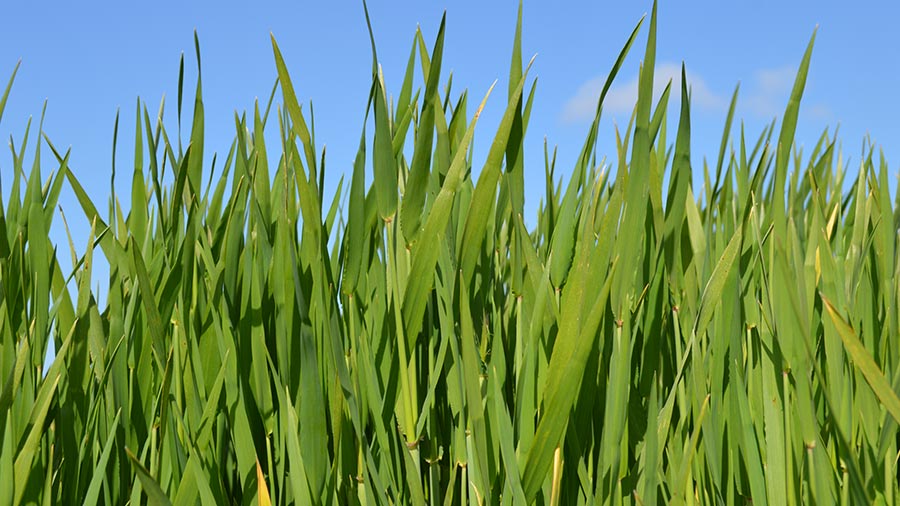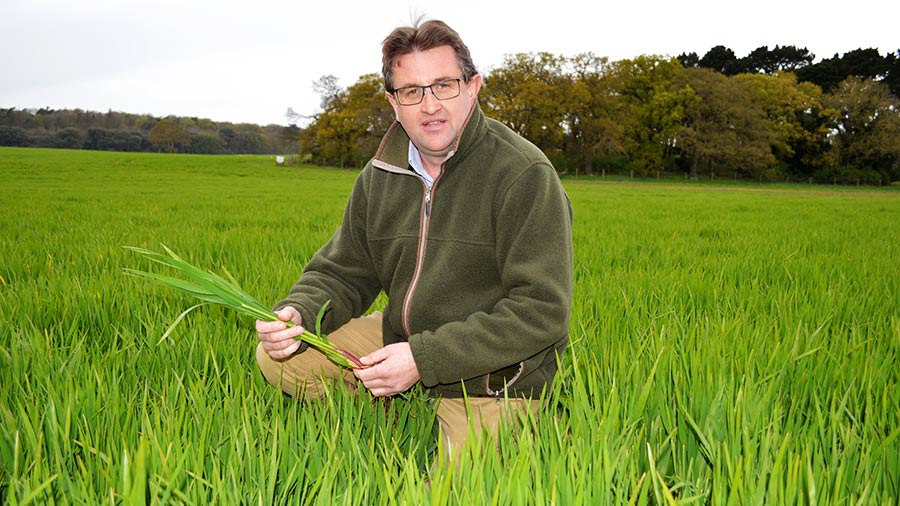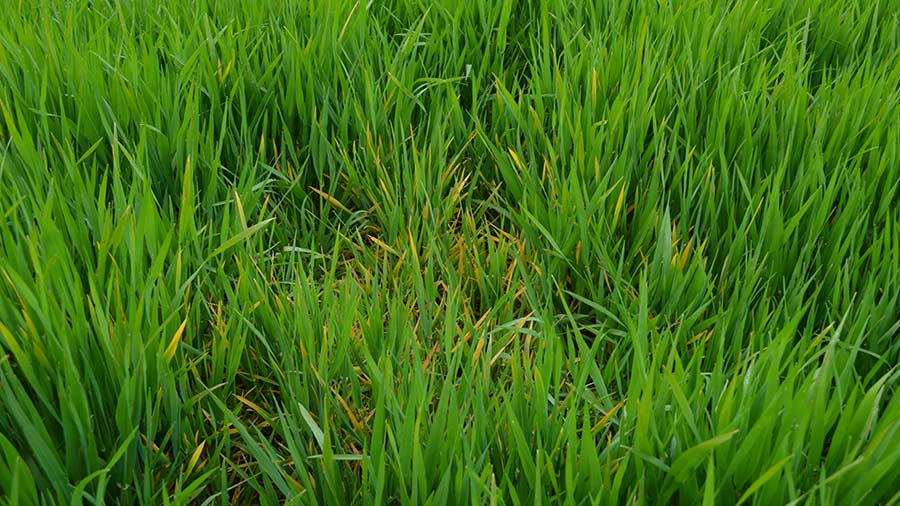Norfolk estate assesses risks in move to no-insecticides
 © David Jones
© David Jones An estate near the north Norfolk coast is farming with no insecticides across nearly two-thirds of its land, and is hoping for flexibility to qualify for payments under new environmental support policies.
Holkham Estate farms 4,000ha of land, and now in its second season of ditching insecticides on 65% of its land, the estate could benefit from payments under the Sustainable Farming Incentive (SFI).
See also: Berks estate focuses on soils, insects and companions for SFI
A payment of £45/ha is on offer under the SFI for not using insecticides, but this could be tricky to sign up for if sugar beet and winter cereals come under attack from aphid-spreading diseases, and an emergency insecticide spray is deemed necessary.
Head of farming James Beamish says the estate is on a path to reducing synthetic inputs, such as pesticides, but he has some concerns about committing to no-insecticide use for crops at risk from aphid attacks.
“We would like some flexibility, as it is a big decision not to use insecticides when crops come under threat,” he tells Farmers Weekly.
Farm facts: Holkham Estate
- Covers 10,000ha
- Holkham Farming Company, farming 4,000ha in-house
- Arable cropping 2,500ha, with the rest in grassland and environmental schemes
- Cropping six- to eight-year rotation, including winter wheat, malting winter and spring barley, oilseed rape, maize, sugar beet, potatoes, spring beans and vining peas
Pesticide-free farming
The estate’s owner, the Earl of Leicester, has challenged the farming operation to go “cides” free by 2030 – that is not using herbicides, fungicides and insecticides across the range of arable crops grown.
While environmental issues are very much on the agenda, the estate is still pragmatic on the financial side and any decisions on cutting insecticides are driven by data-based evidence.
The estate is still building up knowledge of growing crops without insecticides, and farming without these would give a big environmental benefit.
But while no-insecticide cereals might be possible, there is a clear risk to sugar beet and also salad potato crops if attacked by insects.

James Beamish in Craft winter barley © David Jones
Crop protection
The estate is divided into nine farming units, and six of those closest to the coast where temperatures are generally lower than further inland are not using insecticides.
However, three farms further inland still use insecticides on sugar beet and winter cereals if necessary.
These include a neonicotinoid insecticide seed dressing to protect sugar beet from aphid-borne virus yellows, and an autumn pyrethroid insecticide for winter cereals to combat barley yellow dwarf virus (BYDV).
“There is an advantage of being close to the coast as there are fewer aphids there, and there can be a 7-8C temperature difference between the coast and further inland at Fakenham in the spring,” says Mr Beamish.
Even the three farms further inland are limiting their insecticides to the seed dressing for sugar beet and one foliar spray insecticide, if needed, on winter cereals in the autumn, and no spring foliar insecticides are used.
Some 65% of the estate’s 320ha of sugar beet is grown on the northern farms, and last year these crops showed no significant difference in yield from crops treated with the neonicotinoid dressing Cruiser (thiamethoxam) on the three inland farms.
Sugar beet yields
The estate budgets for a 80t/ha yield of sugar beet, but due to the lack of rain and intense heat last season, the yield fell to about 65t/ha, with little overall effect seen from virus yellows.
The no-insecticide approach on the northern farms has encouraged beneficials, such as hoverflies, ladybirds, lacewings and parasitic wasps, to feed on the aphids as the estate looks towards a nature-based solution to this aphid-spread disease.
Sugar beet is still an important spring break crop on the estate, which has a 26,000t beet quota.
It has also cut back on oilseed rape due to cabbage stem flea beetle damage, and spring pulses often struggle on the light land.
On the cereals side, there is a similar picture – 65% of winter wheat and barley on the estate, grown on the six northern farms, did not use an insecticide this season or last season.
At harvest 2022, very little BYDV was seen in barleys or wheats, so there was little damage to yield.
But this season, the mild open autumn in 2022 – which encouraged aphid activity – has led to small patches of the disease appearing in the crops this spring.

Patch of barley yellow dwarf virus in Craft winter barley © David Jones
Drilling time
Mr Beamish says he likes to drill his winter wheat and barley between 13/14 September and 15 October to get crops off to a good start.
In an area vulnerable to slow development along the cold north Norfolk coast and with pressure from wild geese grazing, a delay to drilling to avoid the aphid pressure is not always an option.
The estate grows 460ha of winter wheat varieties, such as Gleam, Extase, Dawsum, Typhoon and Champion, as Mr Beamish looks for varieties with good early vigour in the autumn and little chance of lodging on the estate’s light soils.
Wheat yields are budgeted at 9.5t/ha, and the 2022 harvest saw yields slightly above that figure at 9.6t/ha.
He tried the BYDV-resistant wheat variety Wolverine two seasons ago, but it needed a robust fungicide regime to cope with septoria – as the variety has only medium resistance to the disease – and showed generally poor yields.
However, he has not given up on BYDV-resistant wheat and will try the new variety Grouse from the same RAGT breeder as Wolverine.
He is looking to drill a small area this autumn in the first week of September as it is a slow- developing variety, and then see how it yields and copes with disease.
There is less genetic progress in winter barleys, with only some BYDV-tolerant feed winter barleys available, no malting ones, and no fully resistant ones.
The estate grows 300ha of Craft for the malting market so has no disease-tolerant varietal malting options.
Overall, winter barley yields are budgeted at 7.5t/ha, and actually yielded 7.2t/ha in 2022.
Last season, little BYDV was seen in the winter barley, but this season small patches are being seen in the Craft on the northern farms.
All the winter barley on the three southern farms have had a foliar insecticide in the first week in November.

